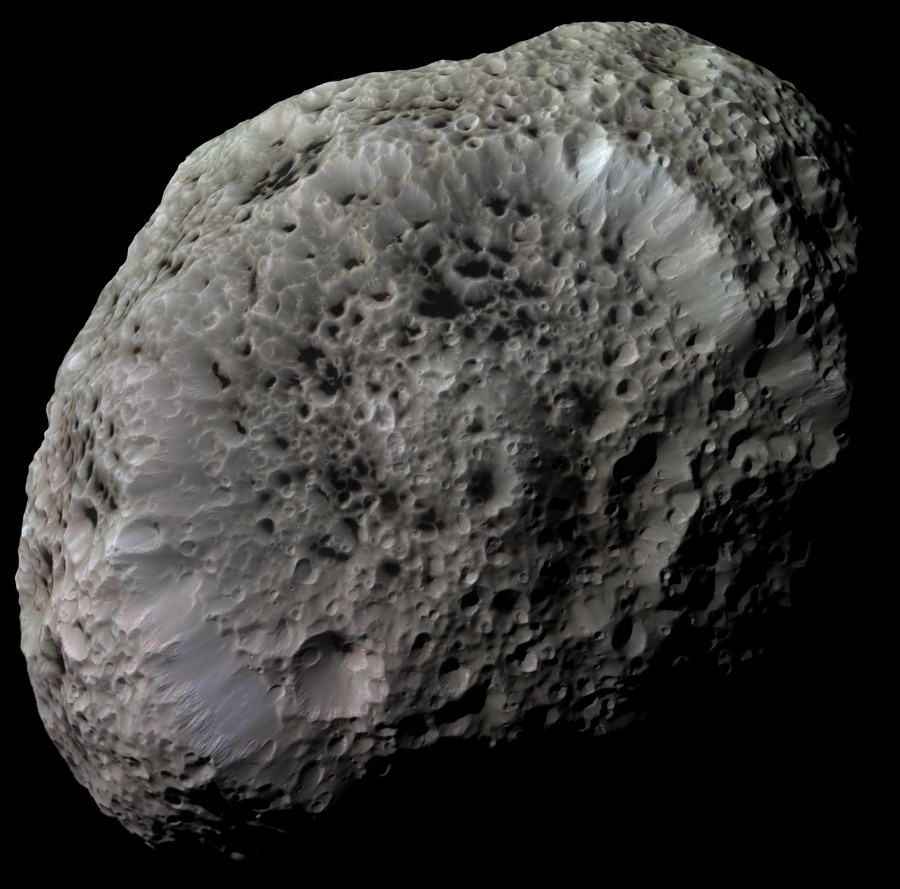Hyperion is the largest of Saturn’s irregular, nonspherical moons. Hyperion’s mean radius is 83.9 miles (135 km), but since Hyperion is rather potato-shaped, its shape can be described in terms of its diameter along its three axes: 255 x 163 x 137 miles (410 x 260 x 220 km, respectively). Considering its odd shape, Hyperion is probably a remnant of a larger moon that was destroyed by a major impact.

WATCH THIS VIDEO
Hyperion rotates chaotically, tumbling unpredictably through space as it orbits Saturn. Hyperion orbits at a mean distance of 933,000 miles (1,500,000 km) from Saturn in an eccentric orbit. This contributes to variations in the spin or rotation of Hyperion. A stronger effect on Hyperion’s rotation is that it is in resonance with Saturn’s largest moon, Titan, which orbits at 759,200 miles (1,221,850 km). Thus, the two objects speed up and slow down as they pass each other in a complex set of variations. Because Hyperion is much smaller than Titan, its rotation and orbit are affected vastly more than the larger moon, and Titan apparently keeps the Hyperion orbit eccentric rather than growing more circular over time.

Hyperion’s density is slightly more than half that of water. This could be due to water ice with gaps (porosity) of more than 40 percent. Also, lighter materials, such as frozen methane or carbon dioxide, could make up part of Hyperion. This is consistent with the concept of Hyperion accreting from a number of smaller ice and rock bodies, but not having enough gravity to compact them. Thus, Hyperion might be similar to a large rubble pile.